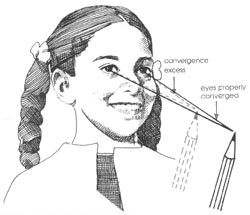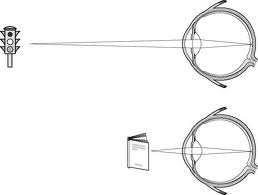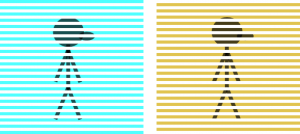3D TV all the nuances, review
The era of 3D television, rejection of 3D
In 2012, televisions with the ability to view three-dimensional images, TVs with 3D, or as they are called 3D TVs, continued to evolve rapidly.
The principle of viewing 3D was developed in the early 20th century, watching movies in 3D was only available in stereo theaters. With the advances in television technology and the beginning of mass production of 3D televisions (2010) it has become possible to view movies and TV shows in 3D in the home.
Is there any harm from 3D TV
Watching 3D movies is generally safe, but a bit tiring. Some viewers complain of headaches and eye fatigue after watching 3D movies. There are a number of limitations, especially for the elderly. These are the occurrence of motion sickness, which in turn can exacerbate other migraine conditions. Let’s say watching one movie for 1.5 to 2 hours, you are likely to feel mild fatigue. Caused by common factors, not 3D.
Disadvantages of 3D TV
Interference between the eyes caused by imperfect image separation
Mismatch between convergence (Convergence in physiology is the movement of paired organs towards each other: for example, convergence of the eyes) and accommodation (from the Latin accommodatio – adaptation, adaptation of an organ or the body as a whole to changes in external conditions. The term is most commonly used to describe a change in the refractive power of the optical system of the eye to clearly perceive objects at different distances). You may see double vision or a blurred image.


It is estimated that about 12% of people cannot see 3D images correctly because of various characteristics. Up to 30% of people have very poor stereoscopic vision. This negates or significantly reduces the immersive effect of 3D-TV.
3D TV technologies
To create a 3D TV image on your TV screen, several conditions must be met:
A 3D TV has a special screen matrix.
The refresh rate on the screen must be at least 120 frames per second (refers to the active technology), at a lower frequency people notice a flickering TV screen.
As of early 2013, two 3D imaging technologies are most commonly used in TVs.
polarization method
active shutter method
There is also a third technology auto-stereoscopic method – a method of creating a three-dimensional image and viewing it without special glasses, this method is experimental and the leading companies have released televisions with this technology.
Toshiba ZL2B to project a three-dimensional image uses a system of small lenses, but in more detail, a layer of micro-lenses is placed on the LCD monitor, each of which deflects light from the pixels of the panel at a different angle. As a result, some pixels are visible to the viewer with one eye and some with the other, creating a three-dimensional effect. For this method, the viewing angle of the image (analogous to such a screen with a changing pattern depending on the viewing angle) plays a major role. By combining different brightness levels of adjacent pixels in the screen matrix to form a single Full HD image pixel, the focus point can be changed over a wide range. Manufacturers recommend a distance of 2.2 meters to a TV with a 55-inch screen diagonal, while a distance of two to five meters is considered an effective operating range. The focus of the 3D image can be adjusted manually, using special templates, in the settings menu, but automatic adjustment is also implemented. The TV is equipped with a built-in camera that tracks the viewer’s eye movements.
Auto-stereoscopic method has its disadvantages: when viewed from the side, the image loses sharpness.
The company Toshiba has released a TV this plan, this model of TV Toshiba 55ZL2 is about $ 7,500, which is prohibitively expensive, and as practice shows the price is really overpriced, in a few years the cost of such a TV will drop several times, if the technology will be in demand. Philips developed a similar technology in 2010, but the company’s marketing analysts decided that further development is impractical because of the slow transition of users from 2D to 3D.
As of early 2013, models with 3D TV support are offered only by leading TV manufacturers, such as:
- Samsung
- LG
- Philips
- Sony
- Thomson
- Panasonic
- Loewe
- Sharp
- Toshiba
Other companies do not have the technology to produce matrices for 3D screens and cannot compete with the market leaders.
Polarization 3D TV LG, Sony, Panasonic
The polarization method is widely used in television production to create a 3D effect.

3d polarization
This 3D image is created so, in front of the screen is set a special film, which changes the angle of propagation of light waves from the TV screen, in passive technology is usually implemented through the line, in the figure you can see that the image consists of alternating lines. The glasses also have a polarizing film. The right eye sees its lines in the image, the left eye sees its lines. This is what makes passive volumetric visualization possible. This technology is used in 3D cinemas and for example LG, Panasonic and Sony TVs.

In the picture we can see what image the left and right eyes of a person will see, but thanks to the inertia of perception, the viewer does not notice that he is shown not the full picture. This technology has a disadvantage – the viewer sees a 3D picture with a reduced number of lines in the horizontal HD resolution, exactly two times, instead of 1080 lines he sees 540. Although it is not noticeable to the viewer.
Active 3D Samsung
In active 3D TV technology, the glasses and the TV are linked (synchronized) with each other (e.g. by infrared light). The glass in the glasses for the left and right eyes is dimmed alternately. The glass in the glasses contains liquid crystals that are polarized when voltage is applied and do not allow light to pass to the viewer’s eye. The dimming occurs in sync with the television image, giving the impression that the left eye sees the image intended for the left eye and the right eye sees the image intended for the right eye. Because each eye only sees its own image, when watching 3D TV the refresh rate is halved, requiring a minimum of 120 frames per minute, with the left and right eyes seeing at 60 Hz each.
Active 3D glasses
Originally, active glasses were very massive because they had a built-in circuitry and power supply for the glasses, in today’s TVs, thanks to advances in technology, active glasses look almost indistinguishable from passive glasses. But they do require recharging.
3D active vs passive
It is difficult to say unequivocally, both technologies are used, so in principle they are close to each other in quality. What they have in common is that, as with all 3D TV systems the luminous flux (image brightness) decreases when watching 3D TV, but in modern TVs manufacturers have almost overcome this drawback and the viewer does not notice when switching from 2D to 3D viewing brightness decrease. The viewer literally gets used to it after 10-20 seconds and does not experience any discomfort. The viewer does not need to strain his vision to see the picture.
Another thing is physiological peculiarities when watching an active 3D TV – it is cheating the brain to create 3D, you can make a person sit and alternately close their eyes. Although one does not notice the alternating dimming of the glasses when watching, but the subconscious notices and as studies show the eyes are more tired and experience more discomfort when watching active 3D television.
Some experts say the future is in passive technology, others say the future is in active technology, and others say the future is in auto-stereoscopic method of creating TV 3D.
As a result, 3D in TVs has disappeared; as of 2019, the production of 3D TVs has been completely discontinued.





